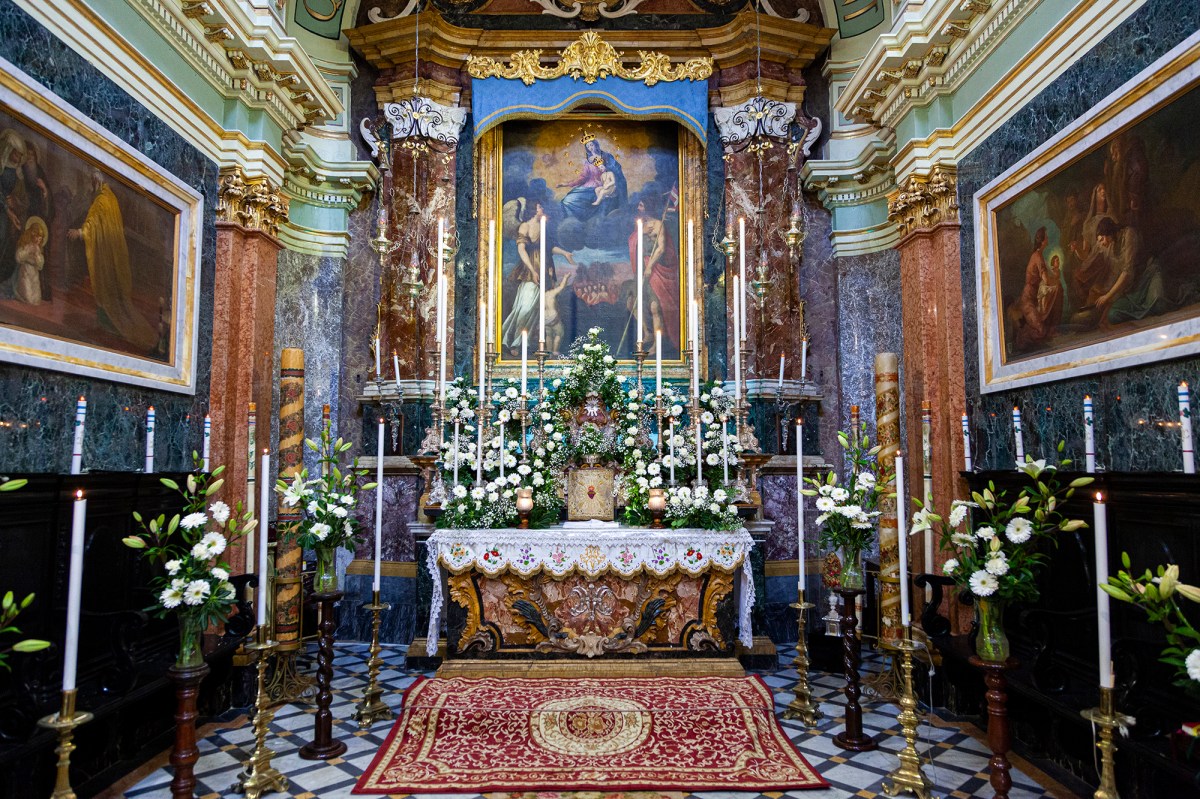A pilgrimage to a Marian shrine and site of miracles and many graces granted by Our Lady.
Lenten Campaign 2025
This content is free of charge, as are all our articles.
Support us with a donation that is tax-deductible and enable us to continue to reach millions of readers.
In the heart of the old village of Birkirkara, right behind the Basilica of St. Helen, there is a small church dedicated to the Virgin Mary. It was originally built in the midst of rocks, rubble and ruins; and in time, it acquired the name of Madonna Tal-Ħerba.
History of Madonna Tal-Ħerba
At first it was practically unknown, but the Virgin Mary chose it as her own, from among many other majestic and more beautiful churches. Holy Mary wanted to show the power and mercy of her heart. A torrent of graces showered the devoted Christians who prayed to the Blessed Virgin Mary before her beloved and fervently venerated image in the tiny church of Tal-Ħerba. As to the name, or better still the nickname, “Tal-Ħerba,” no one has yet come forward with unimpeachable evidence as to what the term stands for. The well-known Maltese author and educator E.B. Vella tried his best to discredit a hypothesis that the term commemorated the inglorious flight of the Ottoman Turks from Malta after they had been repulsed in the Great Siege of 1565. In Maltese there is a similar word, “Ħarba,” which means flight, however, the name is clearly “Ħerba” and in Maltese this means, “ruin” or “times of trouble.” On this there is wide consensus between all linguistic scholars.
We have no firm or proven date when the original Sanctuary was erected. What we do know for sure, from Mgr. Pietro Dusina’s Pastoral visit, is that in 1575 it was already a very well-known Marian shrine, enjoying great devotion, however, it is not referred to as Tal-Ħerba. On the other hand, during a visit to the Parish of Birkirkara by the Bishop of Malta, Mgr. Baldassare Cagliares, in 1615, he referred to it as Tal-Ħerba, and also reported that it was dedicated to the Assumption of Mary (In Maltese: Santa Marija tax-Xahar t’Awissu).
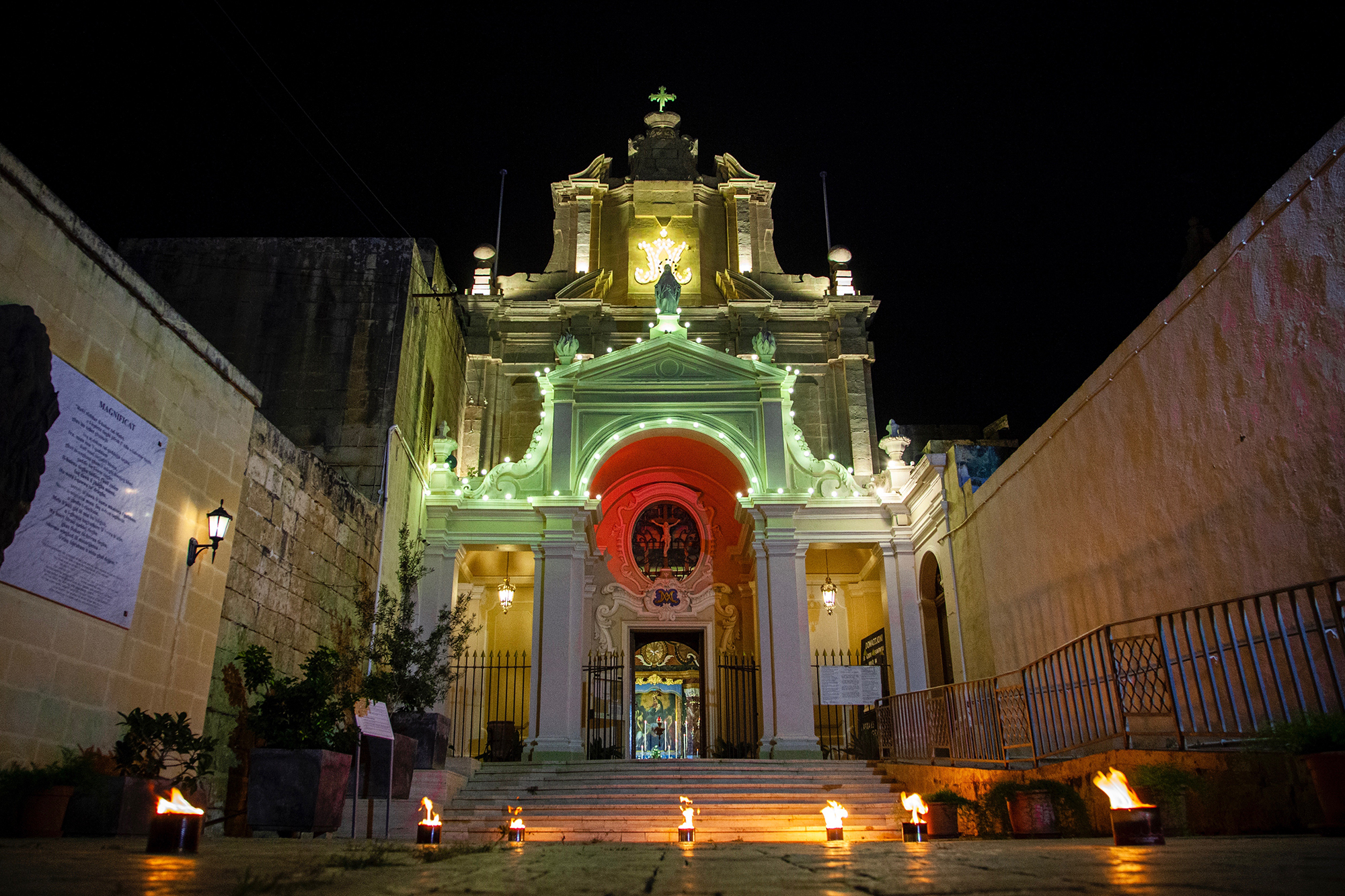
Bishops and documents related to pastoral visits (1637, 1679, 1685, 1809), mention the church of Tal-Ħerba as dedicated to the Nativity of Our Lady — Sub titulo Nativitatis B.M.V. This implies that if in 1615 the church was still dedicated to the Assumption of St. Mary, and in 1637 it was dedicated to the Nativity of Our Lady, the change, if it may be so called, occurred sometime between these dates. It is also worth mentioning that in the Status Animarum of 1647, the sanctuary was also referred to as Our Lady of Grace or Miracles. Some hypothesize that this church was renovated in 1640, but what is certain is that some time before 1644 another church, dedicated to the Nativity of Our Lady, was built in front of its main door, while leaving the old church intact.
Nevertheless, after a pastoral visit in 1673, it was decided that Holy Masses could no longer be celebrated in the old church. A few years later it became the sacristy of the new church, and a hundred years after, it was demolished and rebuilt. This is one of two small chapels, adjoined to the sanctuary, which still stands today. It is nicknamed “il-kappella iż-żgħira tal-ġenb” — the tiny side chapel. The last structural modifications of the sanctuary, before the enlargement carried out in the 20th century, were the rebuilding of the façade and the erecting of the bell tower, both in 1797. The sanctuary was consecrated on March 23, 1785, by Bishop Mgr. Vincenzo Labini — that is, 236 years ago on the dot!
The sanctuary today
At the entrance of the sanctuary, on the white marble pavement, there is an inscription in Latin, which says:
DUM HOC TEMPLUM INGREDERIS
MEMENTO
QUIA DOMINUS SANCTIFICAVIT
ET MARIA SIBI ELEGIT
TABERNACULUM HOC
“Upon entering this temple
remember
that the Lord blessed it
and Mary made it
her abode.”
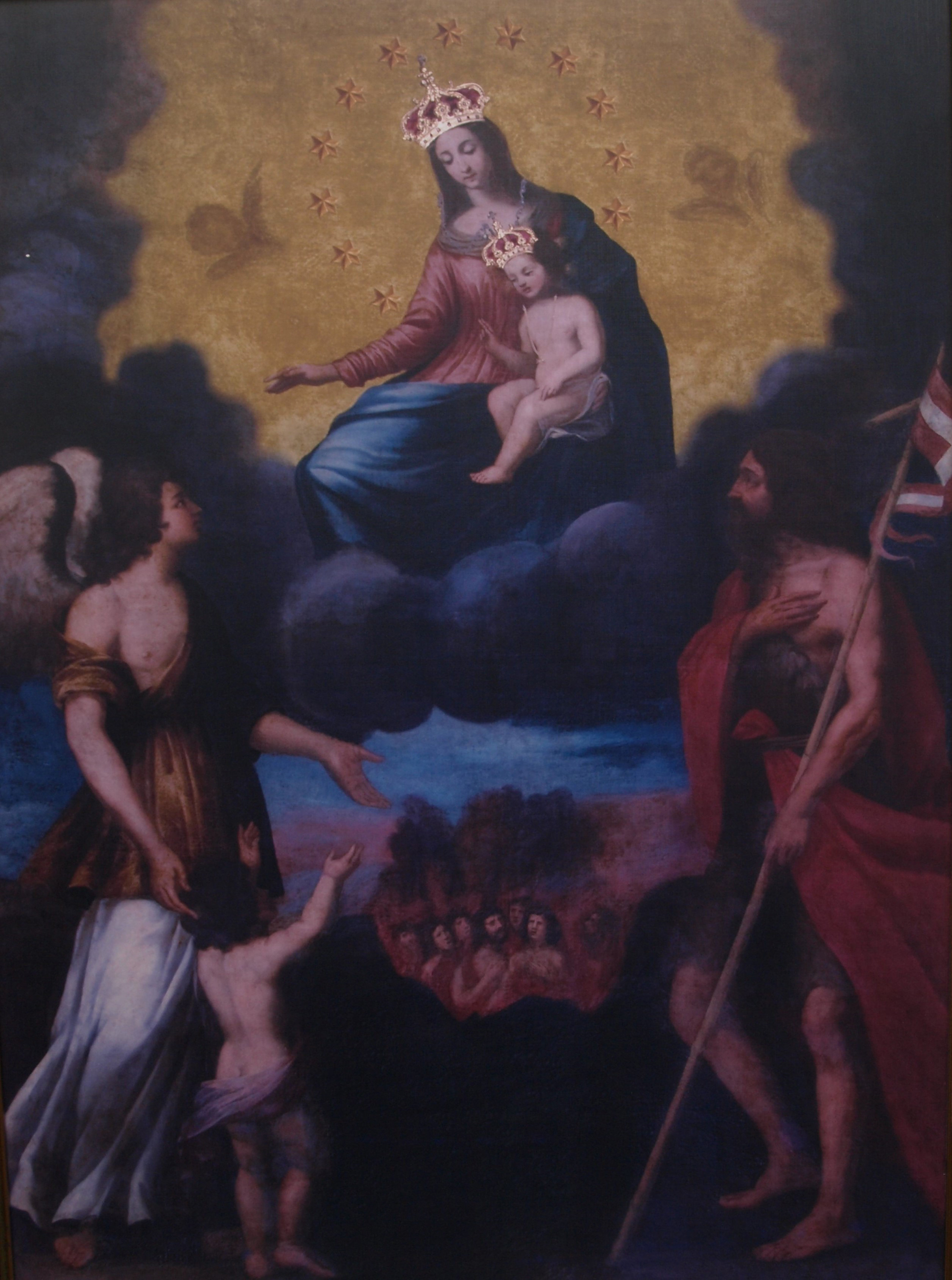
The sanctuary is lavishly and colorfully decorated, and adorned with several artifacts and works of art. At the entrance, on the right-hand side, there is a statue of St. Expeditus, a Roman centurion who was martyred after converting to Christianity. On the left-hand side, opposite the niche of St. Expeditus, there is the entrance to the other chapel, known as the oratory. Opposite the entrance of the sanctuary, one immediately sees the miraculous painting dominating the altar area. This titular painting depicts the Blessed Virgin Mary holding the Child Jesus in her left hand, while her open right hand is welcoming the souls the Guardian Angel releases from purgatory. The Guardian Angel is seen guiding a soul towards Jesus and Mary, while on the other side there is St. John the Baptist. The Madonna and Child were crowned on the August 7, 1910, with beautiful golden crowns adorned with many diamonds. Probably, this titular image was painted between 1668-1679, however, it is not the first one of the sanctuary. In fact, it is a facsimile of a much smaller and older painting. However, the older one had the image of the Patriarch St. Joseph instead of the Guardian Angel. The old painting, which is now in the side chapel of the Sanctuary, was underwritten by Chev. De St. Pierre. Apart from including his family’s coat-of-arms, Chev. De St. Pierre is depicted praying to the Madonna, which is probably a gesture of thanksgiving for a grace granted to him by Holy Mary.
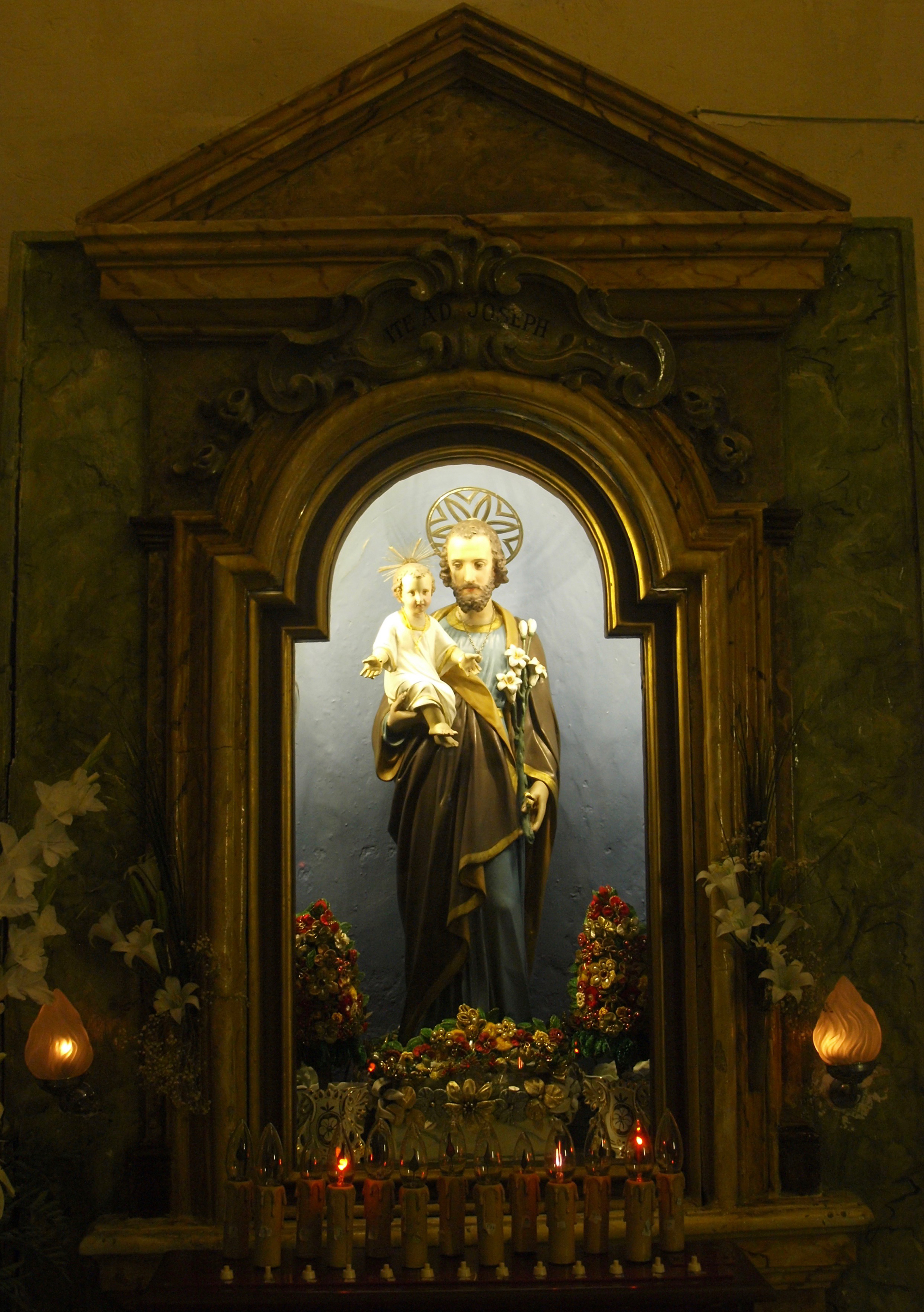
In the oratory one finds a niche holding a statue of St. Joseph, and on the opposite side there is another niche with the holy mortal remains of Santa Victoria. The cherished bones of this saint were brought over from Rome in 1775 and have remained in the sanctuary ever since. Today she is known as St. Victoria, Virgin and Martyr. Adjacent to this niche one finds an antique crucifix, which is held in great esteem and devotion. The walls of the oratory are covered with Ex Voto paintings related to maritime incidents, that is, signs of gratitude for graces granted to sailors, fishermen and sea travelers. The other chapel is gilded with a marble altar, above which there is the old titular painting, and is decorated with impressive and very intricate Rococcò sculptures. One of the internal doors of this chapel serves as an entrance to the sacristy, while another leads to a small hall replete with numerous Ex Voto paintings. The Ex Voto paintings covering the holy walls of this ancient sanctuary are resounding testimonies, echoing throughout the centuries, of the love the Maltese had, and still do, for the Madonna Tal-Ħerba. This chapel also houses a very special embroidered bouquet which was donated by Grand Master Jean Parisot De Valette in commemoration of the victory of the Great Siege. One would need volumes to include and describe all the works of art and artifacts found in the sanctuary and its two sister chapels.
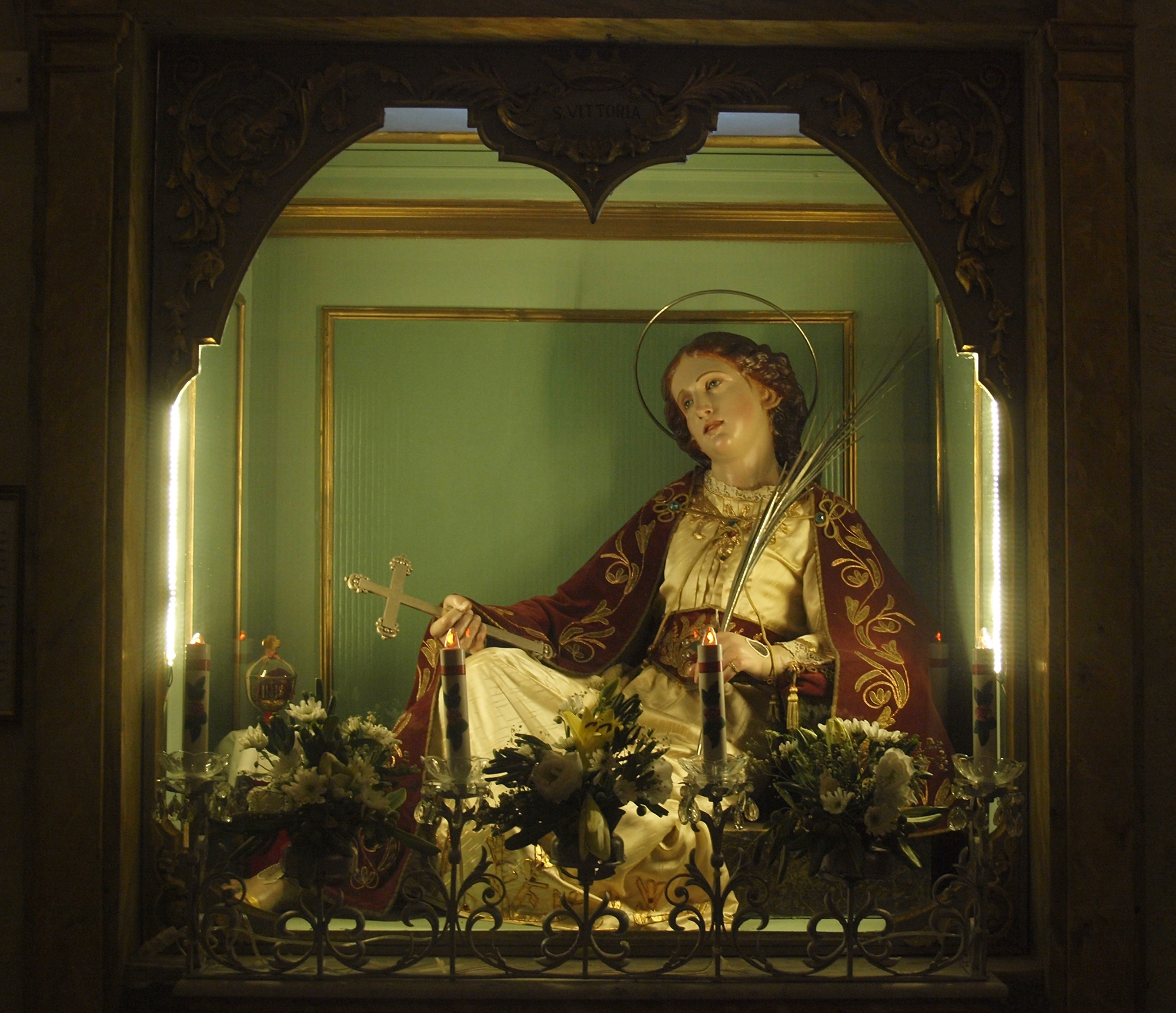
Graces granted and indulgences
In the old days, when Malta was struck by ravaging epidemics, such as the plague and cholera, or when parks and fields dried out due to droughts, huge pilgrimages to the Sanctuary of Tal- Ħerba were organized, both from cities and villages. There the Maltese pilgrims prayed fervently, and implored Our Lady’s mercy and intercession, so her Divine Son would deliver them from these calamities. Our forefathers wholeheartedly put their trust in the Blessed Virgin, and she never failed to listen and accede to their prayers and lift the mishaps vexing them and the whole country. Even today, Tal- Ħerba is one of the most frequented sanctuaries in Malta. Throughout the year, particularly Wednesdays and Saturdays, the days of Our Lady, as well as Friday (when the outdoor Birkirkara market is set up), many visit the sanctuary to pray to the Blessed Virgin Mary, before her holy image. Mostly, they are either praying for a grace or showing their gratitude for having received one!
A popular story about this sanctuary is that a paralytic on crutches was passing by and heard the church bell tolling. He asked why and from where the bell was tolling. He was told that it was calling the faithful for Holy Mass about to be celebrated at the chapel. The man hurried as fast as his disability allowed him to hear Mass at Tal-Ħerba. The minute he entered the sanctuary, the crutches fell from under his arm pits and he walked freely. With a joyful and thankful heart, the cured paralytic fell to his knees before the Madonna and praised for her intercession. The news of this miracle spread like wildfire throughout the small island, and the devotion to the Madonna Tal-Ħerba increased tremendously. Not only the Maltese flocked to the Holy Shrine to pray to the Blessed Virgin, but also people from overseas came to visit the Sanctuary – from Sicily, Italy, Britain, France and Spain pilgrims came to kneel in devotion before the Holy Image. Even afterwards, many continued to receive graces and be healed from incurable diseases by praying to the Madonna Tal-Ħerba.

Witness to all this are the above-mentioned scores of paintings donated as Ex Voto by numerous supplicants whose pleas were heard by the Blessed Virgin. They wanted to preserve their thanksgiving in paintings for future generations to see and believe. For many were the faithful who through the intercession of Our Heavenly Mother under the venerated title of Tal-Ħerba were granted special graces from the hands of Our Lord. A dedicated gallery within the sanctuary holds about 450 Ex Voto paintings, from a total of 550. Here we can also see naval rigging ropes, crutches, silver figurines and military war medals offered by soldiers and sailors as a sign of gratitude to their Madonna Tal-Ħerba. It is clear that while some are very old, others are definitely new, attesting to the continued faith in the healing powers of the Madonna Tal-Ħerba.
We put the paintings in two categories. Those pertaining to sea rescues and savings from drowning were generally donated by mariners, like sailors, fishermen, and sea passengers. These found themselves in great mortal danger in storms and in engagements with the enemy. Their only ray of hope was their Heavenly Mother, and to her they turned in their hour of need. The Madonna Tal-Ħerba answered their prayers. Thus, they declare in writings on so many paintings. A great majority of the paintings are marked by the letters V.F.G.A. (Votum Fecit Gratiam Accepit), which stands for “A Vow was made and the Grace was granted.”
In the second category we find about 300 paintings, which represent thanksgiving for gracesthat the Madonna Tal-Ħerba has showered on many who were suffering from illnesses and disease. The blind who were made to see: the deaf who were made to hear; the lame who were made to walk; the barren who were made fruitful; the sick who were made healthy; In Our Madonna Tal-Ħerba, all found comfort and assistance.
The main altar of the Sanctuary is privileged (Altare Privilegiatum). An inscription on a marble tablet says (translated from Maltese): Pope Pius VI to this Church renowned throughout Malta for being visited by Christians has the pleasure to grant new graces and privileges so every priest every time he says Mass on the altar of the Madonna for the repose of a Christian soul in Purgatory, this same soul receives an indulgence. This privilege granted on the 31st of July, 1776, will remain standing until the end of time.
Apart from this papal indulgence, the sanctuary was granted other indulgences by Popes Clement XIV (1771), Pius VI (1779), Pius IX (1851), two by Leo XIII (1890, 1893), and two by St. Pius X (1905, 1907). The latter also issued two decrees, to authorize Good Friday functions (1906) at the sanctuary and to elevate the sanctuary to sacramental level. The Tal-Ħerba Sanctuary was also granted a number of indulgences by Maltese bishops, because throughout the ages the leadership of the Church relished this sanctuary inestimably: Mgr. Vincenzo Labini (1785), Mgr. Gejtano Pace Forno (1866) and seven indulgences by Mgr. Pietro Pace (1865, 1890, 1896, 1904, 1908, 1909, 1910).
A final thought
The Sanctuary of Our Lady of Tal-Ħerba is alluring and enkindles quiet and worship in one’s heart. It invites the believer to pray more earnestly, especially during an adversity and when brokenhearted or afflicted by an illness for which there is no cure.
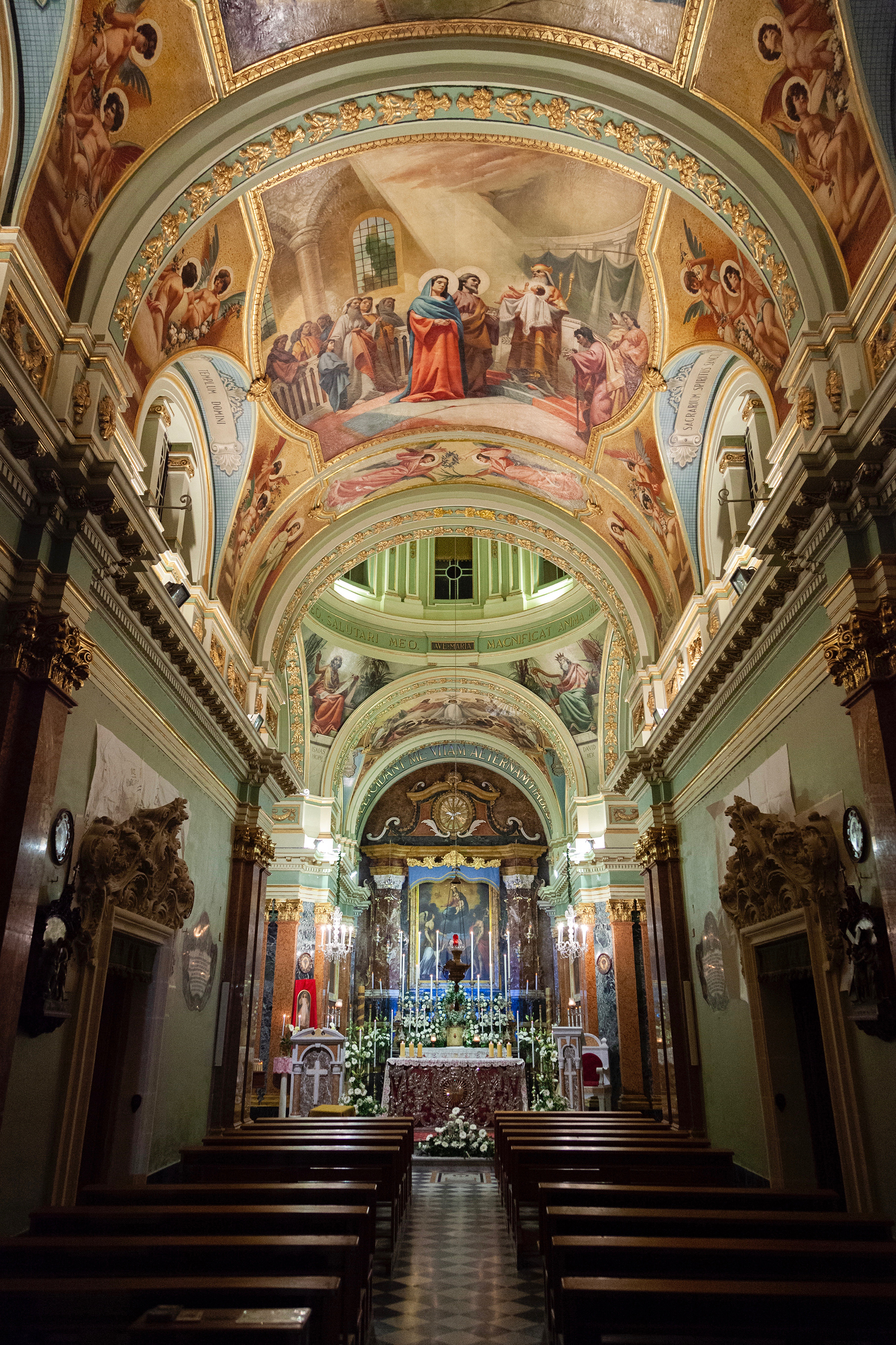
The mere thought of being before the image through which the Madonna granted, and still does, torrents of graces, confers sweet and gentle hope, like a balm flowing into the heart, which makes you truly believe that the Virgin Mary will deliver and heal you, too. There are many who testify and affirm that whenever they visited the sanctuary of Tal-Ħerba, sorrow gripped their heart when it was time to leave the sanctuary and part from the beloved image of Holy Mary. The presence of the Virgin Mary is really felt; it seems that in this sanctuary, Mary finds the joy of her heart. Mary elected this sanctuary, so through her image she stays with us, as a Mother with her children, to love us, to console us, to deliver us from our enemies and from harm, and to heal us from diseases of the body and the soul.
Our Lady of Tal-Ħerba, pray for us.
Let us also remember that coming Friday is the feast of Our Lady of Sorrows (traditionally celebrated in Malta on the Friday before Good Friday), and that our Suffering Mother, immortalized in Statue of La Pieta, is always eager to turn her eyes of mercy towards us in our journey in this valley of tears.
Mater Dolorosa, ora pro nobis.
I would like to thank the Provost of the Basilica of St. Helen (Birkirkara) Mgr. Paul Carmel Vella, and the curator of the Sanctuary of Madonna Tal-Ħerba, Mr. Twanny Muscat, who kindly and patiently assisted me to compile this article. I would also like to thank my father who meticulously reviewed the article (and other articles) before publication.
Reference
Vella Apap N. L-Istorja tas-Santwarju tal-Madonna tal-Ħerba (The History of the Madonna Tal-Ħerba Sanctuary). Our Lady of Tal-Ħerba Sanctuary, Birkirkara, Malta. 2000

